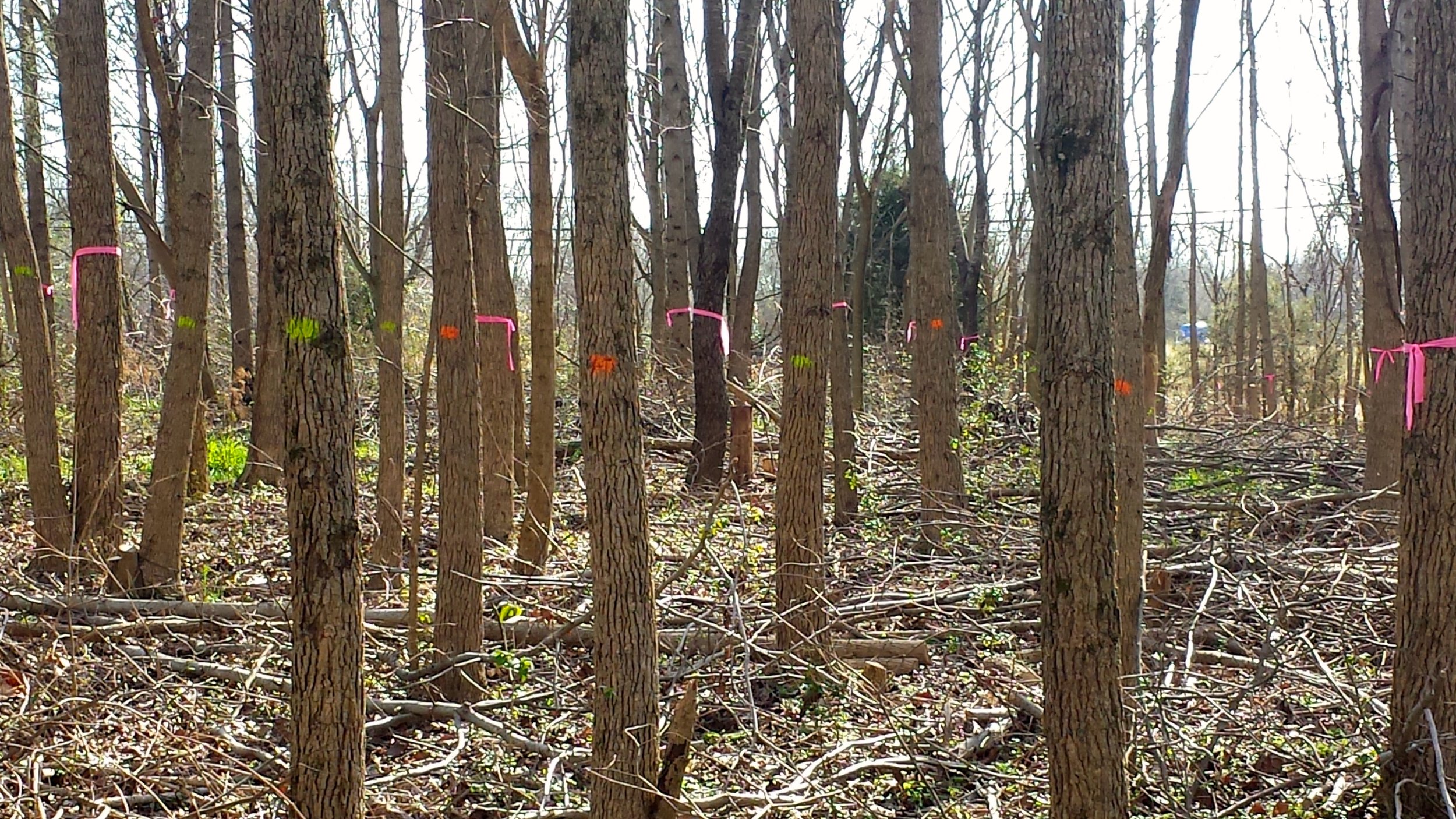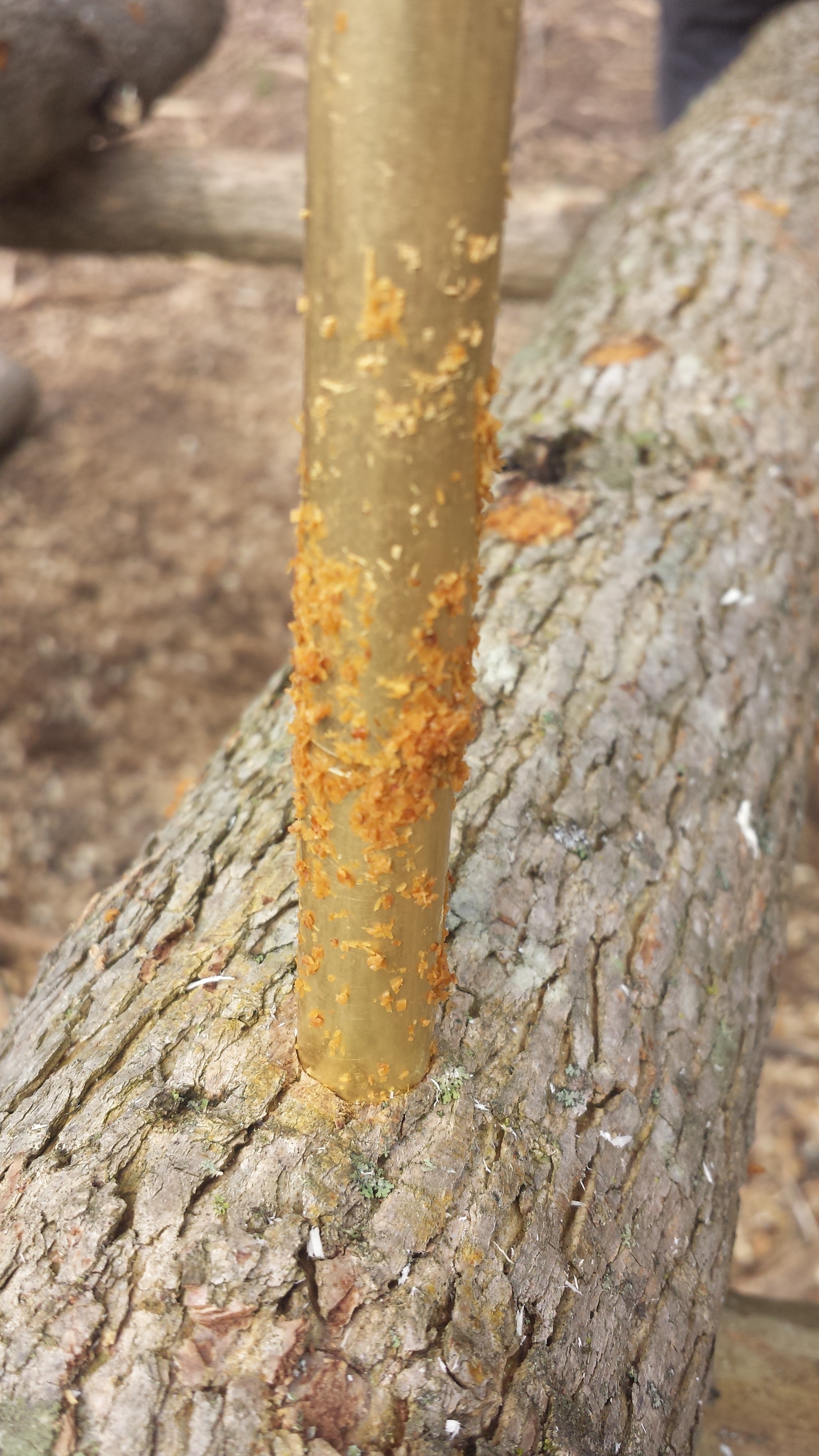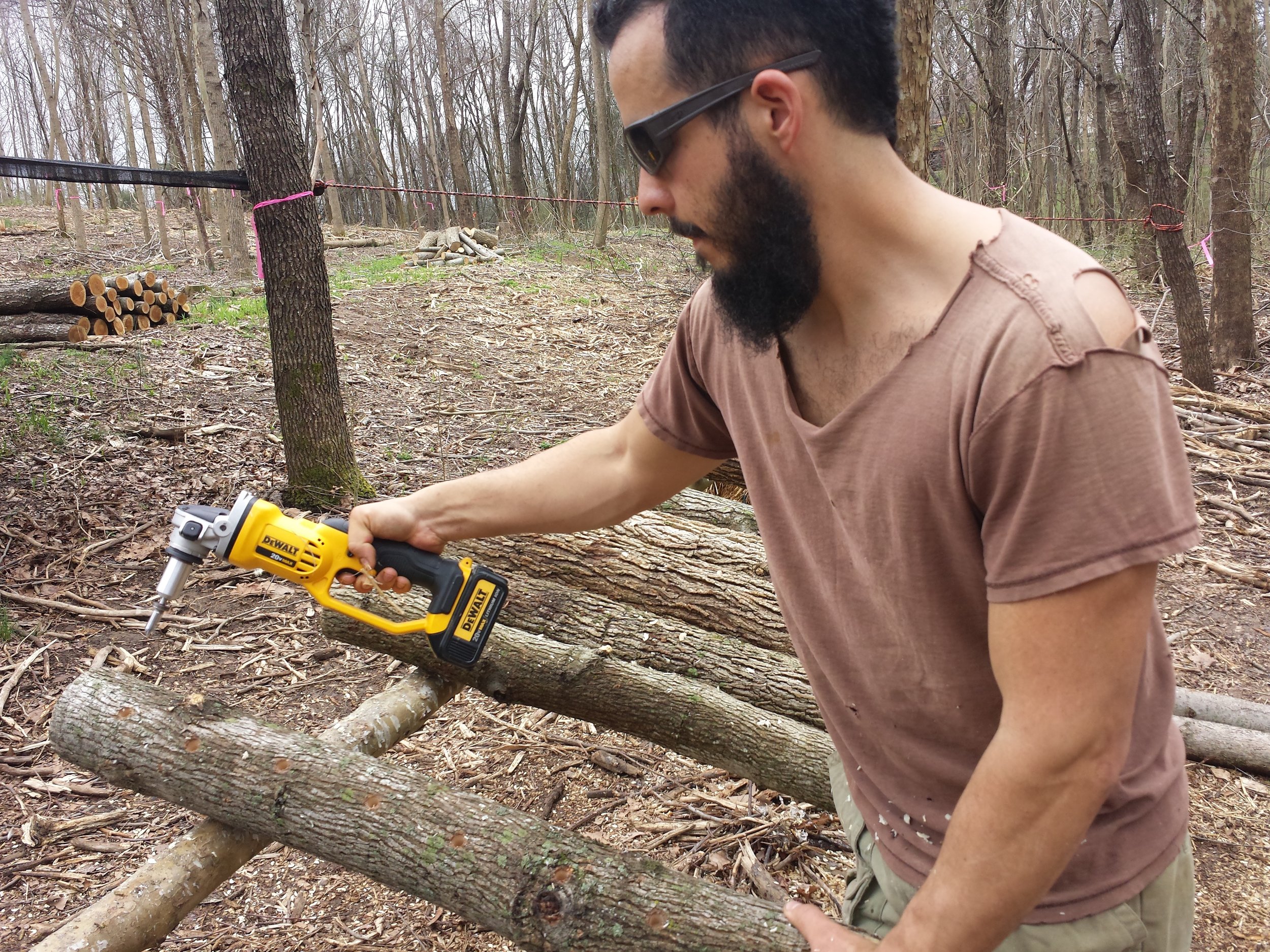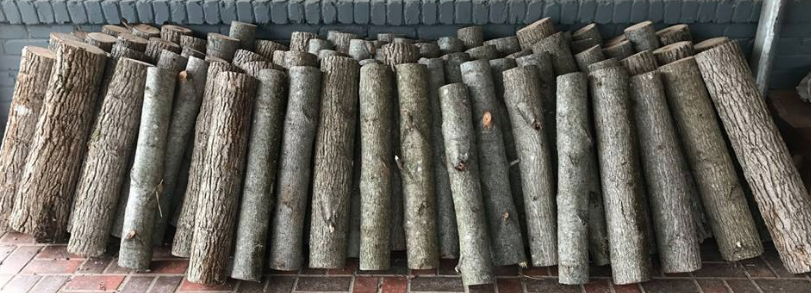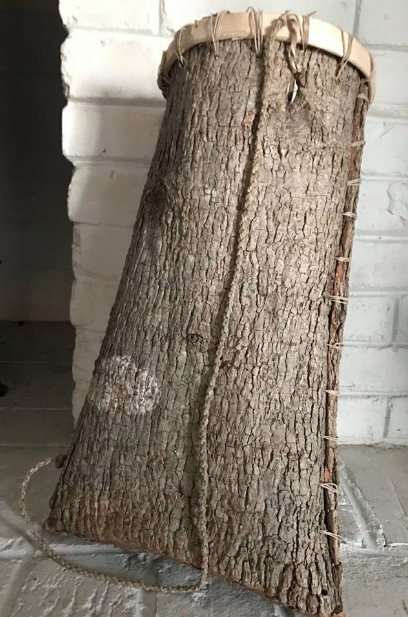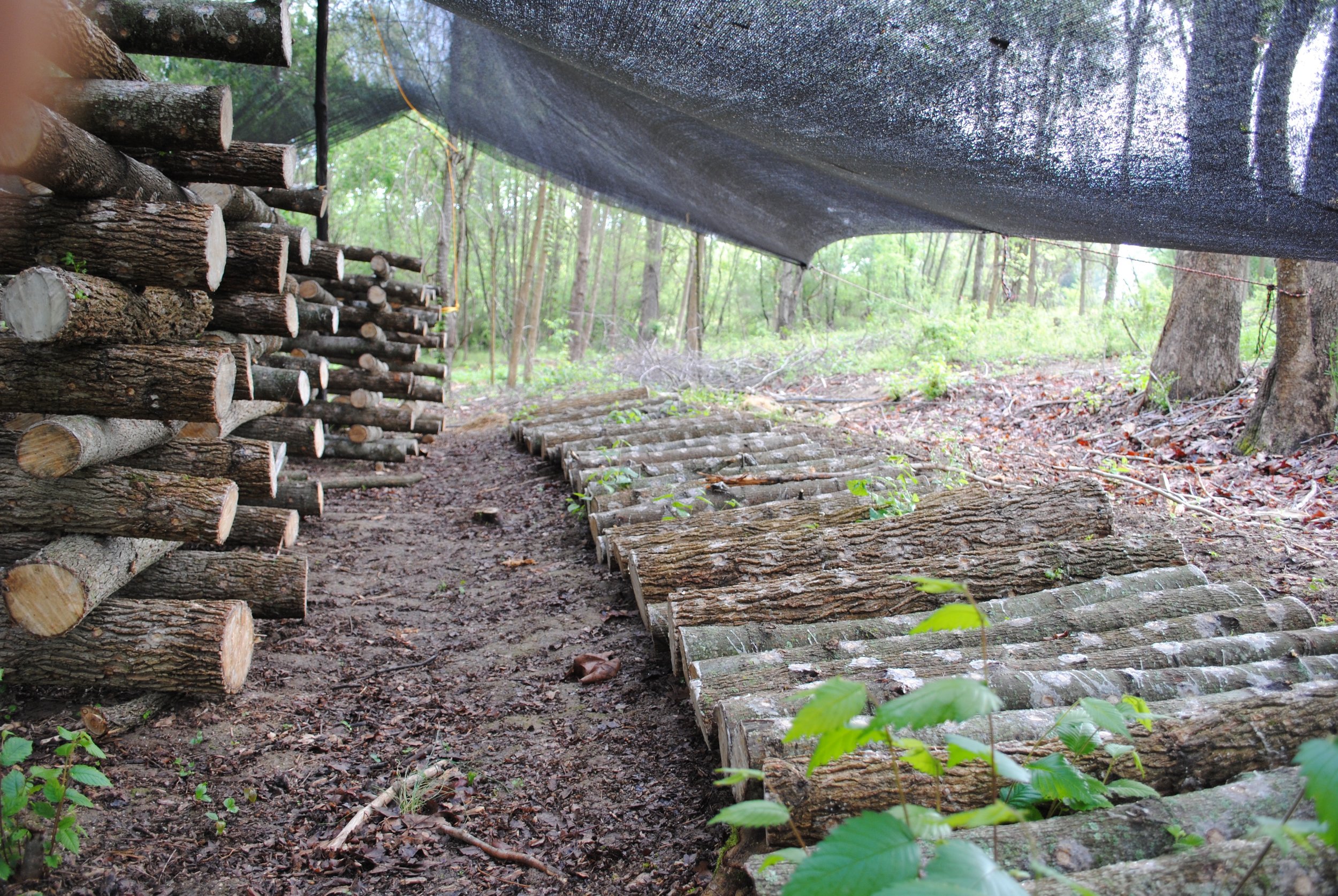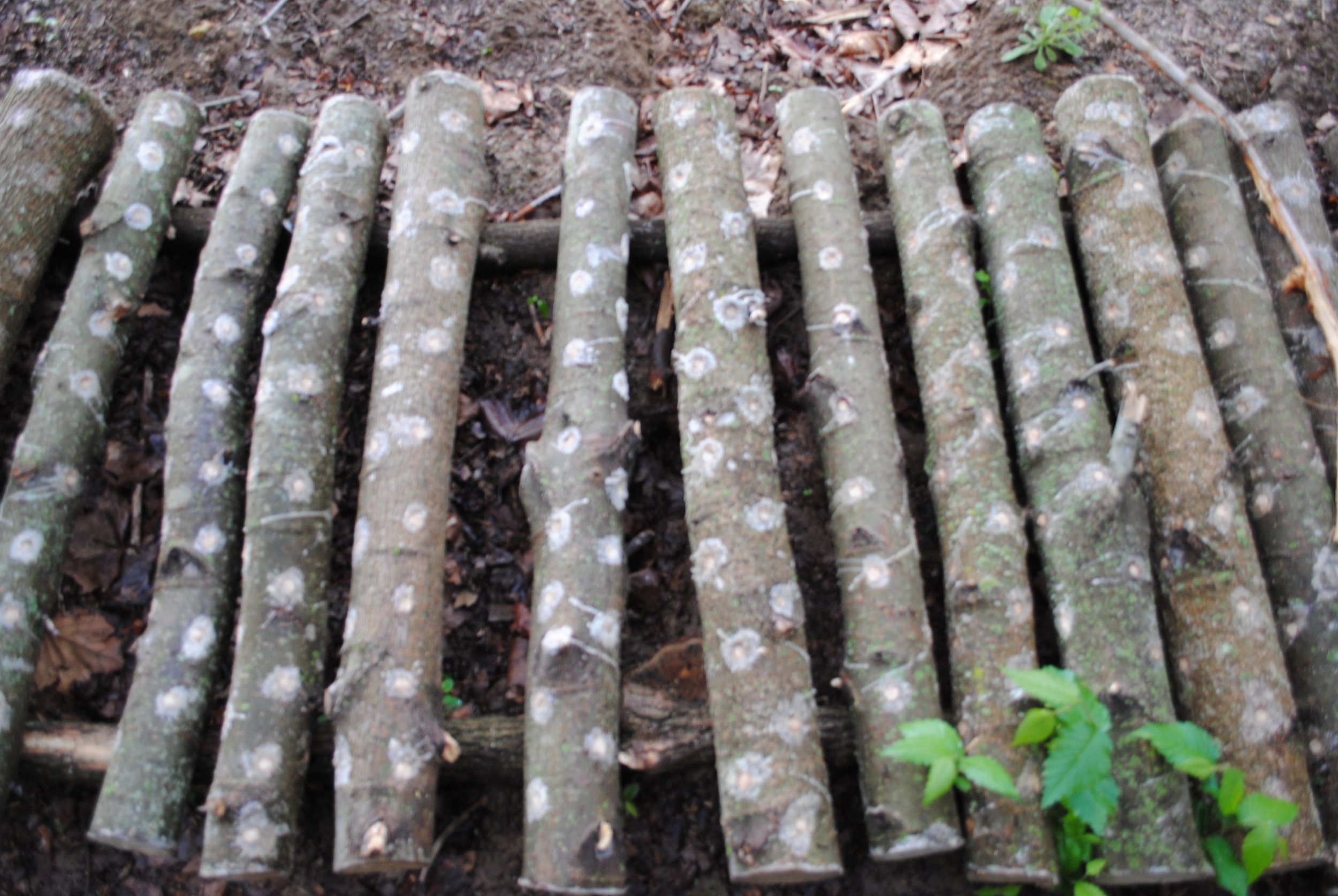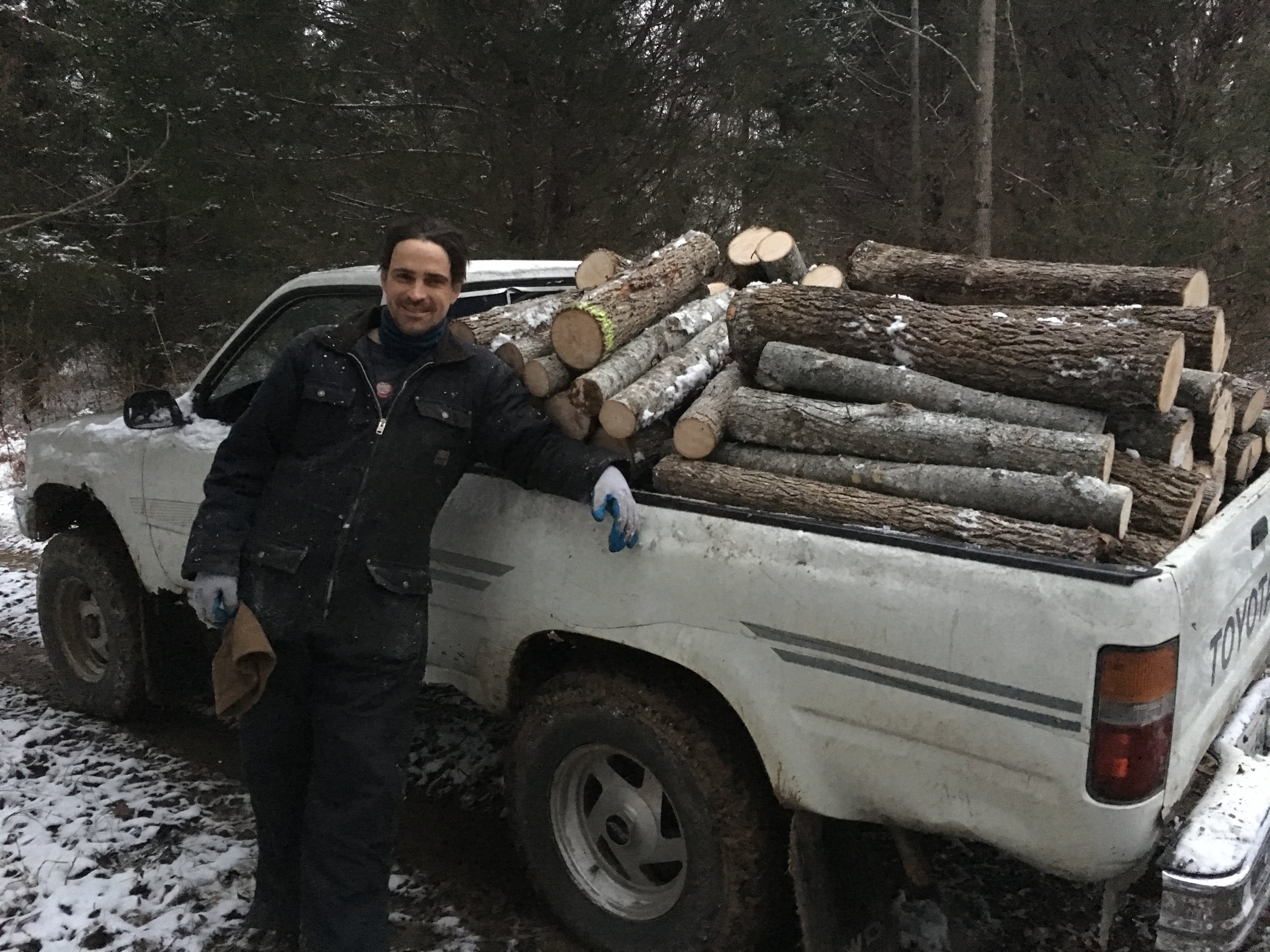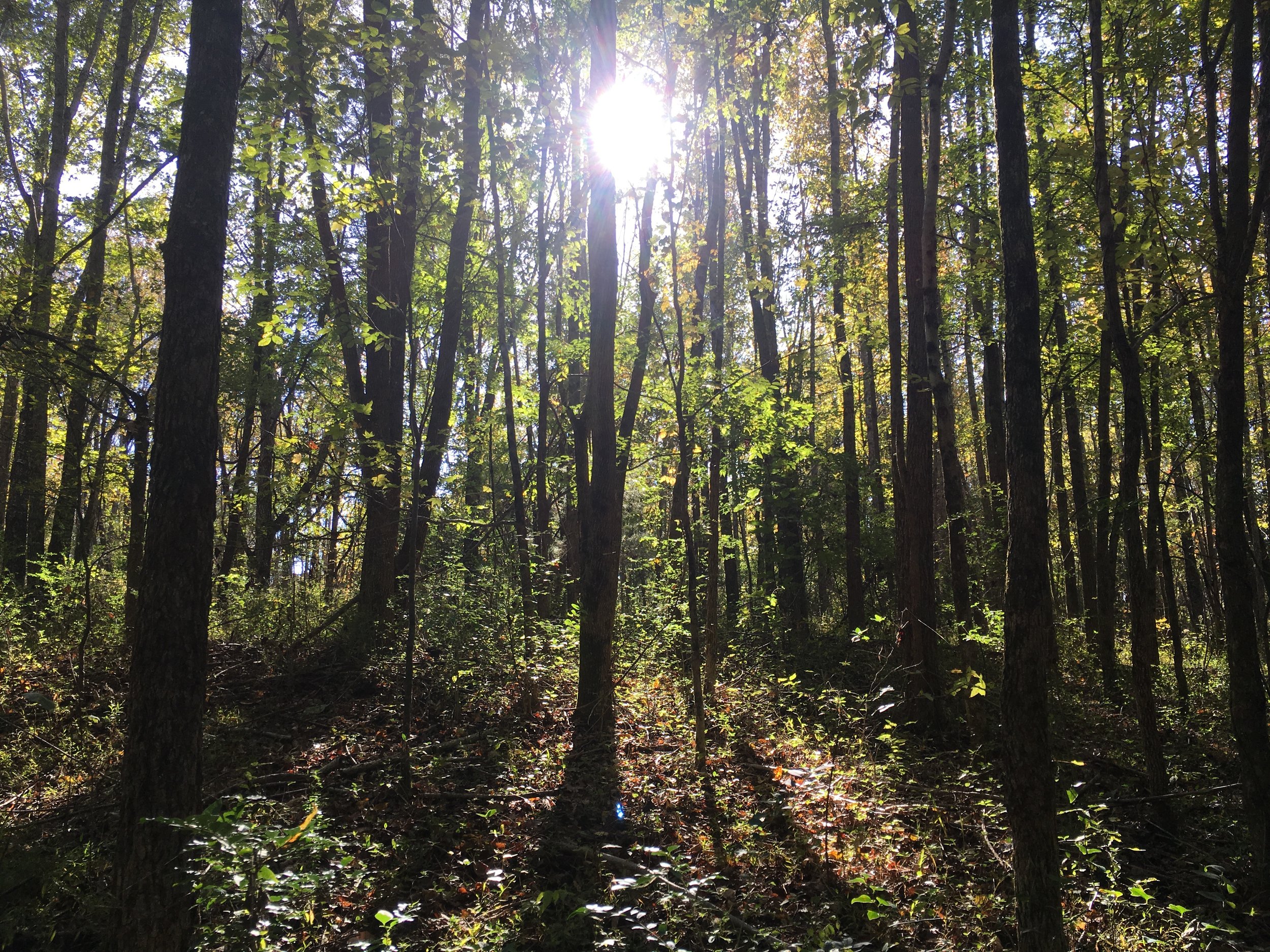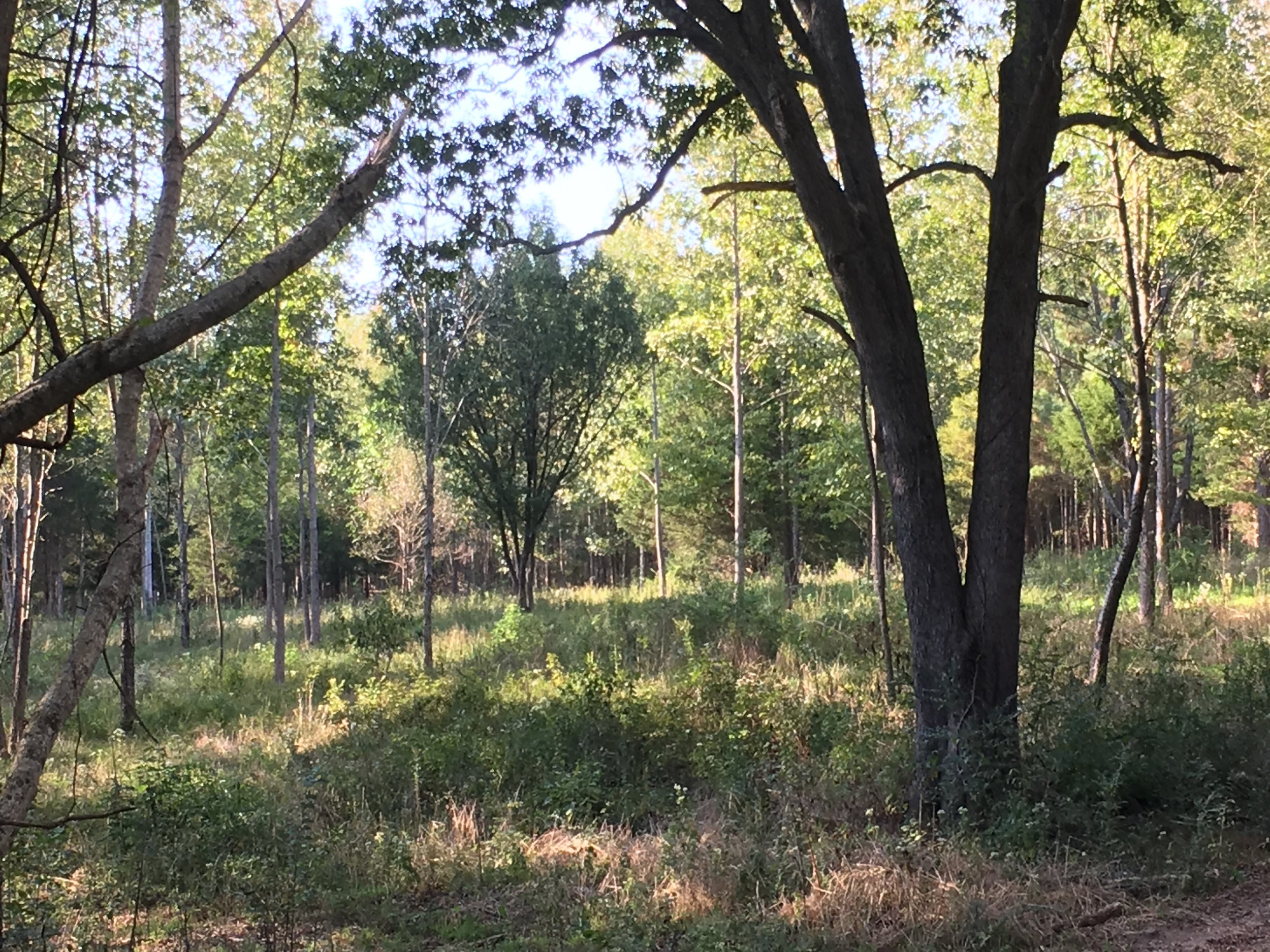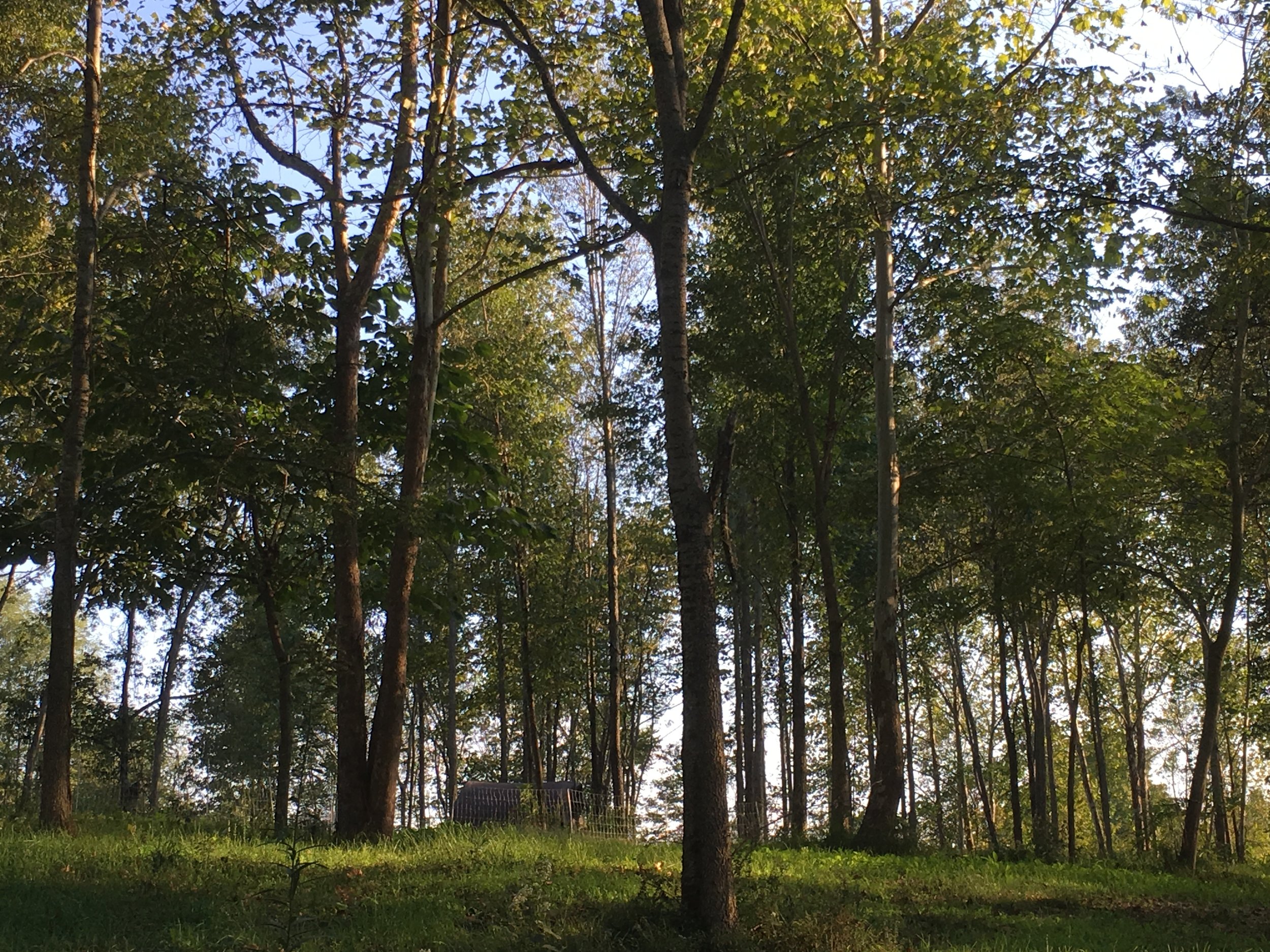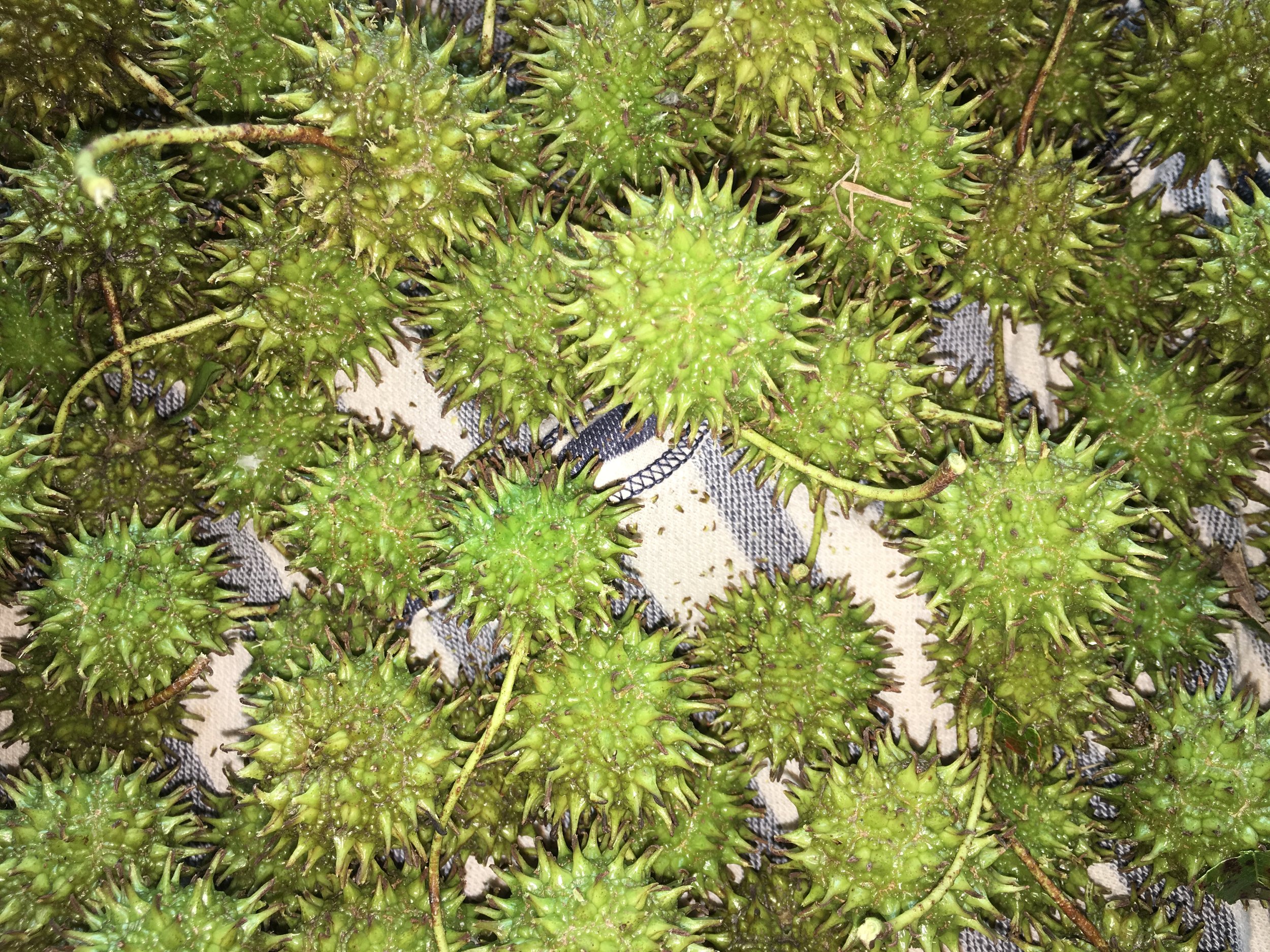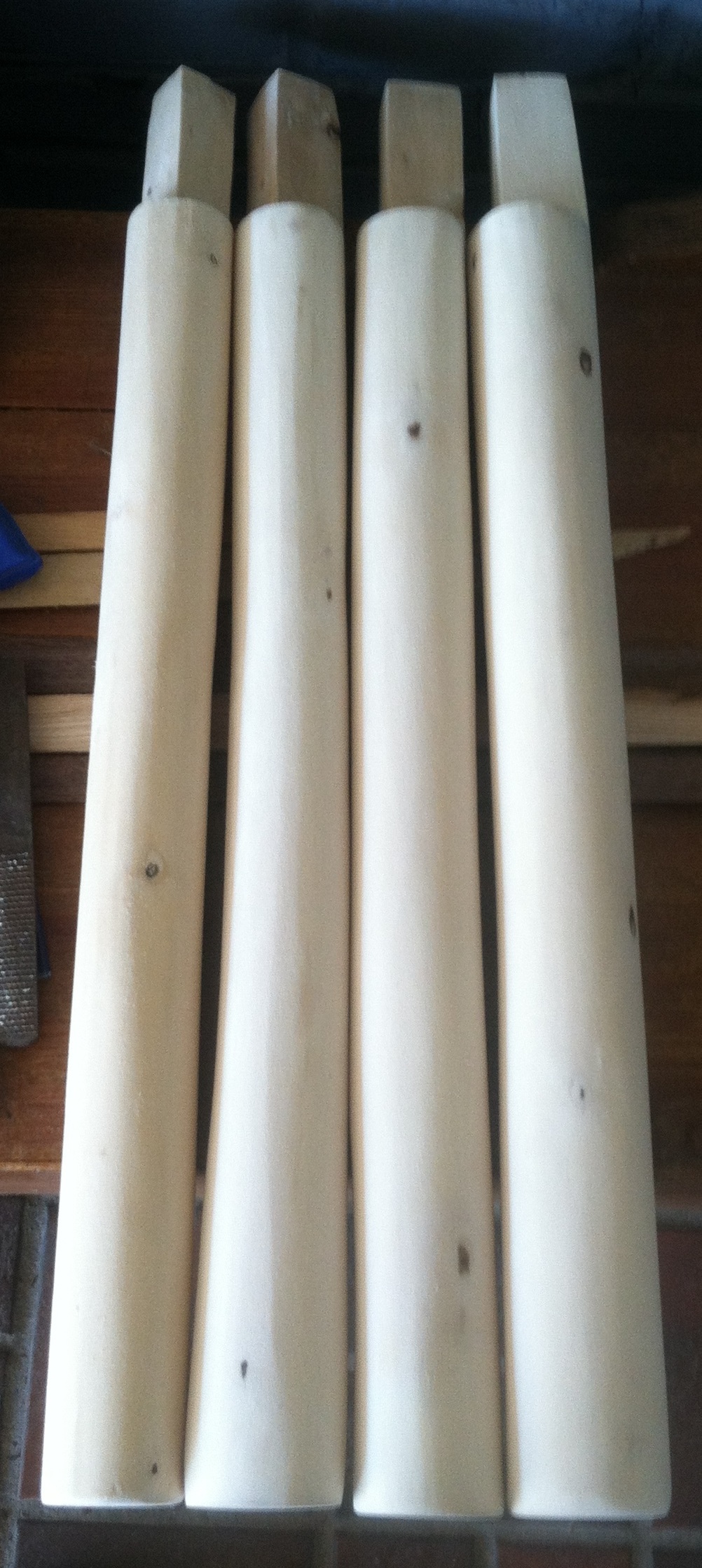Every year at Thriving Earth Farm we cut trees from our forest for the synergistic purposes of harvesting logs for shiitake mushroom production and to participate in the regenerative succession of the forest ecology. Through the harvesting process, we actively thin out an incredibly dense stand of trees. This thinning cut reduces competition in the forest among trees, allows for a greater diversity of tree species to thrive, and adds organic matter to the forest floor. Each year we meticulously work with the land to decide which trees to harvest for the best ecological benefit. We walk the forest, evaluate which species are over-represented and under-represented, which trees are in decline, which trees need more root space or sunlight, and which trees are already old enough to start contributing some real beneficial ecosystem services. Through this thinning process we harvest only the most over represented tree species, only trees between 15-25 years of age (which is the most represented age group), and we do so using the low impact regenerative principles of eco-forestry.
While many seek out white and red oaks for shiitake production, on our land, those trees are vastly under-represented. Because of this, we have never once considered harvesting oak for mushroom production, as it would be an ecologically unwise decision. When we first moved here some 4 years ago however, we quickly learned that our forest was a natural plantation of young Sweetgum trees (Liquidambar styraciflua). Little did we know that this tree would become the foundation of our mushroom production. Some 40 years ago, our land was a commodity crop farm that was abandoned and bush hogged up until about 25 years ago. In the following years the abandoned land was seeded by many types of trees, but mostly by large Sweetgum trees nearby. This eventually created a hyper dense forest of Sweetgum trees predominating, growing straight, tall, and with central leaders. When we first moved here and told many people about the abundant presence of Sweetgum in our forest, we heard over and over again "trash tree!", "Its garbage!", "useless!". But knowing better, we began to seek out and observe the almost infinite gifts that Sweetgum offers both to human and animal alike. For example, Sweetgum is medicine. The prickly seed pods in their green phase, as well as the seeds, inner bark, and green leaves of Sweetgum, posses Shikimic acid and Storax. Shikimic acid is a potent natural anti-viral and Storax is a compound which has neuro-regenerative, antibiotic, and anti-cancer properties. Sweetgum is food for wildlife. Through direct observation we have found that Sweetgum seeds serve as a staple food for a wide variety of birds, turkeys, and even squirrels, as well as being a a host tree for the amazing Luna Moths that we have found in abundance on our property.
Sweetgum is also useful for the things we need. After learning from the well known naturalist, Doug Elliot, how to make Appalachian style " poplar bark baskets" we decided to try to make them out of Sweetgum, and sure enough, Sweetgum proved to be an excellent material. Each year we make a small number of bark baskets for gifts to friends and for sale to the public. We also use Sweetgum for firewood every year, and although it doesn't have high BTU's, if it is dried well, it burns well! Sweetgum is valuable as a building material. It is fast growing, grows tall and straight, is highly disease and pest resistant, and often has very little branching. And although the wood is not decay resistant, studies have shown that it is slightly stronger than white pine for timber use. Because of the potential for warping, wood should be used in the round (debarked) or milled and stacked and stickered (with adequate weight on top) and out of the sun and elements. When a Sweetgum tree grows large and old the heartwood develops an incredible dark color similar to walnut. Because of this, older growth Sweetgum has been given the nickname "Satin-Walnut".
The uses of Sweetgum are vast and the list goes on. Because of its great attributes and its hyper abundance on our property, we use it for many things. Yet because we use it so much, we seek to manage the forest in a way that will allow it to be represented in abundance in our forest indefinitely. When we first started growing Shiitake mushrooms on Sweetgum, many, including ourselves, were skeptical about its effectiveness. Regardless of our skepticism however, we decided to try it out, and the results have been astonishing. Young Sweetgum logs, when harvested in the dormant season, are very light and easy to handle; they are straight and they have a large amount of sapwood, which is ideal for shiitake mushroom production. We have found from our experience in Tennessee that if you inoculate your logs in the winter, or even in the early spring, the logs will begin producing in the fall and will produce almost all winter long (especially with winter strains of shiitake). We have found that not only do mushrooms produce quickly on Sweetgum logs, but they also produce in abundance and with longevity. From our experience, they produce for about 3-4 years depending on log diameter. After our initial experimentation and success with Shiitake production on Sweetgum, we have opened the door to many others who have both purchased logs from us and others who have sought out advice and recommendations on Sweetgum log cultivation.
We are excited to announce that this year, Thriving Earth Farm has teamed up with Henosis Mushrooms to provide pre-inoculated mushroom logs for the home scale grower. Logs have been sustainably and regeneratively harvested from the Thriving Earth Farm eco-forest and will be inoculated with Henosis strains of shiitake spawn. Logs will be available for sale at this years Nashville Lawn and Garden Show from February 28th - March 3. Come out and let us help you get started in cultivating your own homegrown gourmet Shiitake mushrooms! By purchasing logs you will support sustainable livelihoods, and regenerative forestry work, as well as two local Nashville Businesses! #ThrivingEarthFarm #HenosisMushrooms #NLGS2019

